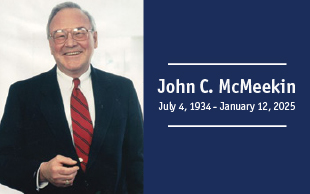


With new healthcare legislation promising basic health care for millions, there will be a demand for more primary care practitioners—a gap that nurse practitioners are ready to fill. DIRECTIONS editorial staff sat down with Tine Hansen-Turton, executive director of PHMC affiliate National Nursing Centers Consortium (NNCC) and PHMC vice president for Health Care Access and Policy; Ann Ritter, director of health center development and policy at NNCC; and Brian Valdez, health policy manager at NNCC to discuss healthcare reform legislation and the impact it will have on advanced practice nurses.
![]() Why should nurse practitioners and NNCC-member nurse-managed health centers want healthcare reform? How could it affect them in their everyday patient care roles?
Why should nurse practitioners and NNCC-member nurse-managed health centers want healthcare reform? How could it affect them in their everyday patient care roles?
![]() Tine Hansen-Turton: Healthcare reform is a good thing for nurses. This is an opportunity for which we have been advocating for a long time. With the current shortage of primary care physicians, and even fewer physicians going into primary care, resulting in a shortage of as many as 44,000 physicians in the fields of general internal medicine and family medicine by the year 2025, there really is no other way to meet the need than through primary care nurse practitioners, who have an opportunity to claim a significant core of health care delivery.
Tine Hansen-Turton: Healthcare reform is a good thing for nurses. This is an opportunity for which we have been advocating for a long time. With the current shortage of primary care physicians, and even fewer physicians going into primary care, resulting in a shortage of as many as 44,000 physicians in the fields of general internal medicine and family medicine by the year 2025, there really is no other way to meet the need than through primary care nurse practitioners, who have an opportunity to claim a significant core of health care delivery.
Ann Ritter: The law also recognizes that we're going to need community providers in order to successfully implement the law. Healthcare reform focuses on improving health care in communities, and that’s exactly where our members are: in urban, rural and suburban communities across the country. It also focuses on public health and disease prevention, creating new investment in wellness services and preventive care. This fits very well with nursing's overarching philosophy of comprehensive, patient-centered care that's meant to prevent illness instead of just treating the symptoms of disease.
![]() What was NNCC’s role in the healthcare reform legislation?
What was NNCC’s role in the healthcare reform legislation?
![]() TH: We were instrumental in assuring that nurse-managed health centers were included in healthcare reform. We laid the groundwork to help ensure the sustainability of the nation’s nurse-managed health centers through the creation of a new $50 million grant program. The new law is a culmination of 10 years of work positioning nurse-managed health centers as critical access points for underserved populations and as teaching sites for faculty and students. This is what we were funded to do! Our founding goal was to make the nurse-managed health center federally recognized. A big part of our mission was accomplished by the bill itself.
TH: We were instrumental in assuring that nurse-managed health centers were included in healthcare reform. We laid the groundwork to help ensure the sustainability of the nation’s nurse-managed health centers through the creation of a new $50 million grant program. The new law is a culmination of 10 years of work positioning nurse-managed health centers as critical access points for underserved populations and as teaching sites for faculty and students. This is what we were funded to do! Our founding goal was to make the nurse-managed health center federally recognized. A big part of our mission was accomplished by the bill itself.
Brian Valdez: NNCC’s advocacy for a federal grant program dedicated to nurse-managed health centers began in earnest with the introduction of the Nurse-Managed Health Clinic (NMHC) Investment Act of 2007 in the US Senate. Although that legislation eventually stalled, NNCC’s advocacy, which included holding a congressional briefing around the importance of NMHC funding, made it possible for the bill to be reintroduced in 2009. Last year, NNCC worked with congressional champions to reintroduce the NMHC Investment Act in the Senate and its companion bill in the US House of Representatives. Again, NNCC’s members engaged in a national advocacy campaign, involving both senators and representatives. Ultimately, NNCC’s contacts in the Senate and House were able to get the NMHC grant program language included in the final healthcare reform legislation signed into law by President Obama earlier this year. We were very persistent. We stayed focused and on message. And we had a very solid team. Tine, the NNCC policy team, our members and our interns were invaluable.
![]() How will the new legislation affect the nurse-managed health center business model and make such centers more sustainable?
How will the new legislation affect the nurse-managed health center business model and make such centers more sustainable?
![]() AR: The new $50 million funding program is relatively small compared with some other parts of healthcare reform, but it will go a long way toward improving the sustainability of nurse-managed health centers. The new grant program is designed to support the development and operation of nurse-managed health centers, also called nurse-managed health clinics in the legislation. While the details still need to be worked out, this will help ensure that many of our members, especially the ones that can’t qualify for existing health center funding programs, are able to get the new funding that they need to continue serving vulnerable patients.
AR: The new $50 million funding program is relatively small compared with some other parts of healthcare reform, but it will go a long way toward improving the sustainability of nurse-managed health centers. The new grant program is designed to support the development and operation of nurse-managed health centers, also called nurse-managed health clinics in the legislation. While the details still need to be worked out, this will help ensure that many of our members, especially the ones that can’t qualify for existing health center funding programs, are able to get the new funding that they need to continue serving vulnerable patients.
BV: The new legislation also establishes a definition for nurse-managed health clinics in the Public Health Service Act. This is the first time the term nurse-managed health clinic has been defined in federal law. Getting nurse-managed health clinics defined in the federal law helps their sustainability by making them eligible for potential new funding sources.
![]() The profile of nurse practitioners is on the rise. What are your predictions about nurse practitioners post-healthcare reform bill?
The profile of nurse practitioners is on the rise. What are your predictions about nurse practitioners post-healthcare reform bill?
![]() TH: There are about 150,000 practicing nurse practitioners right now, and about 5,000 to 6,000 graduating every year. I would bet that, 10 years from now, nurse practitioners will be the face of primary care—an accepted face. Nurse practitioners are very highly skilled. Most other countries have something called a general practitioner, known as GPs, for primary care. If you look at the educational levels of nurse practitioners in the United States, they are more highly educated than most GPs throughout the rest of the world, yet barriers to nurse practitioner practice remain. So I still think you will see the politics of nurse practitioners being challenged.
TH: There are about 150,000 practicing nurse practitioners right now, and about 5,000 to 6,000 graduating every year. I would bet that, 10 years from now, nurse practitioners will be the face of primary care—an accepted face. Nurse practitioners are very highly skilled. Most other countries have something called a general practitioner, known as GPs, for primary care. If you look at the educational levels of nurse practitioners in the United States, they are more highly educated than most GPs throughout the rest of the world, yet barriers to nurse practitioner practice remain. So I still think you will see the politics of nurse practitioners being challenged.
![]() Healthcare reform will require more advanced practice nurses as primary care providers. What types of incentive programs would you recommend to encourage nurse practitioners to choose primary care as their specialty?
Healthcare reform will require more advanced practice nurses as primary care providers. What types of incentive programs would you recommend to encourage nurse practitioners to choose primary care as their specialty?
![]() BV: Practicing in that type of setting is its own incentive. Our past studies have shown a high rate of satisfaction associated with practicing in community health centers; part of it is just the independence they have, in terms of making their own practice decisions. That autonomy is a major incentive. The healthcare bill also provides incentives for loan repayments for students.
BV: Practicing in that type of setting is its own incentive. Our past studies have shown a high rate of satisfaction associated with practicing in community health centers; part of it is just the independence they have, in terms of making their own practice decisions. That autonomy is a major incentive. The healthcare bill also provides incentives for loan repayments for students.
AR: Most nurse practitioners choose that profession because they’re interested in primary care already. One way to encourage nurse practitioners to enter primary care and stay there is to remove unnecessary legal barriers to nurse practitioner practice. Nurse practitioners are capable of safely providing care that’s comparable to a primary care physician, but many states place regulatory hurdles in their way. These hurdles don’t improve patient safety, but they make nurse practitioner practice less efficient and they are immensely frustrating to nurse practitioners. Getting rid of these barriers would go a long way toward increasing the number of nurse practitioners providing primary care.
![]() Are nurse-managed health centers or other types of clinics a good career move for nurse practitioners or advanced practice nurses?
Are nurse-managed health centers or other types of clinics a good career move for nurse practitioners or advanced practice nurses?
![]() AR: Absolutely! Nurse-managed health clinics encourage nurses to take on leadership roles and develop their skills as managers, which is not always the case in other health care settings. And many nurses find practicing in underserved and vulnerable communities to be incredibly rewarding.
AR: Absolutely! Nurse-managed health clinics encourage nurses to take on leadership roles and develop their skills as managers, which is not always the case in other health care settings. And many nurses find practicing in underserved and vulnerable communities to be incredibly rewarding.
![]() How do you see healthcare reform, however it plays out, affecting nurse education?
How do you see healthcare reform, however it plays out, affecting nurse education?
![]() AR: In addition to supporting nurse-managed health clinics and school-based clinics as clinical education sites, there are a number of education-related provisions in health care reform. For example, health care reform will make student loans more available to nurses pursuing doctoral degrees. It will also provide stipends, loans and traineeships to nurses from racial and ethnic minority groups, in order to make the nursing workforce more diverse and representative of the United States as a whole.
AR: In addition to supporting nurse-managed health clinics and school-based clinics as clinical education sites, there are a number of education-related provisions in health care reform. For example, health care reform will make student loans more available to nurses pursuing doctoral degrees. It will also provide stipends, loans and traineeships to nurses from racial and ethnic minority groups, in order to make the nursing workforce more diverse and representative of the United States as a whole.
![]() Nurse practitioners are a proven, cost-effective response to the demand of high-quality care. But just how cost-effective are they?
Nurse practitioners are a proven, cost-effective response to the demand of high-quality care. But just how cost-effective are they?
![]() TH: About 90% of the services currently offered by a physician primary care provider can be done by a nurse practitioner, and studies show that those services cost on average at least 20% less when provided by nurse practitioners rather than if performed by a physician. The savings are even greater when compared with the cost of a visit to a hospital emergency department, which is why many private insurers reimburse members who use nurse managed health centers and retail clinics.
TH: About 90% of the services currently offered by a physician primary care provider can be done by a nurse practitioner, and studies show that those services cost on average at least 20% less when provided by nurse practitioners rather than if performed by a physician. The savings are even greater when compared with the cost of a visit to a hospital emergency department, which is why many private insurers reimburse members who use nurse managed health centers and retail clinics.
AR: Our research has found that nurse-managed health clinics also save the health care system money because our patients use generic medications more often and are hospitalized less often than patients of other community-based health providers.
![]() TH: The timing of healthcare reform is somewhat challenging because it was adopted after the appropriations process. There are so many new programs and services that have a dollar amount attached to them in the bill, that it’s not clear whether we can get them all appropriated. So what we’re doing in the nurse-managed health center arena is gearing up to push for appropriations, which may not come until this time next year. So that is a challenge. That is my biggest worry, the fact that we could have an unfunded or inadequately funded mandate. Appropriations and building the capacity of our member health centers to maximize the opportunities presented by healthcare reform are next on our agenda.
TH: The timing of healthcare reform is somewhat challenging because it was adopted after the appropriations process. There are so many new programs and services that have a dollar amount attached to them in the bill, that it’s not clear whether we can get them all appropriated. So what we’re doing in the nurse-managed health center arena is gearing up to push for appropriations, which may not come until this time next year. So that is a challenge. That is my biggest worry, the fact that we could have an unfunded or inadequately funded mandate. Appropriations and building the capacity of our member health centers to maximize the opportunities presented by healthcare reform are next on our agenda.





